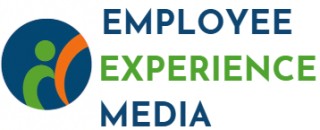Understanding the Role of Team Sessions in Risk Management
Importance of Team Sessions in Risk Management
Team sessions are pivotal in the comprehensive risk management process, especially when addressing potential risks within a project. These sessions serve as a platform for project managers and stakeholders to collectively assess, plan, and implement risk response strategies. An essential aspect of these meetings is the ability of project managers to identify both opportunities and vulnerabilities within the project landscape. By engaging in these collaborative discussions, project teams can create a more robust management plan that anticipates potential risks.
Benefits of Structured Team Meetings
Structured team meetings offer numerous advantages in the realm of risk response. They enable the systematic analysis of risks, ensuring that every possible impact on the project is identified and addressed. Through collective intelligence, project teams refine their risk mitigation strategies and enhance the effectiveness of their response plans. Furthermore, these sessions provide a valuable opportunity for risk assessment, allowing teams to re-evaluate the risk register and update it with new insights gathered from the discussions.
Collaborative Approach for Better Outcomes
Adopting a collaborative approach within team sessions not only improves risk response but also enhances employee engagement and accountability. Encouraging open dialogue and diverse perspectives helps project managers gain a more nuanced understanding of the risks and their potential impacts. As a result, the strategies developed are more comprehensive and aligned with the project goals. For more insights on enhancing collaboration, explore this resource on Canadian workplaces.
Preparing for the Unexpected
The dynamic nature of projects often comes with unforeseen challenges. Effective team sessions equip the project team with the ability to adapt swiftly to changing circumstances. Through continuous risk analysis and proactive planning, teams remain agile, capable of implementing timely risk responses. By continually refining their approach through these collaborative sessions, project teams uphold the strength and resilience needed to navigate the complexities of project risks.
Key Components of an Effective Working Session
Essential Elements for Risk Control Sessions
Effective team sessions are a cornerstone of successful risk management, requiring a blend of structure and adaptability. Here are some key components to consider:- Clear Objectives: Set specific goals for each session, focusing on what the team aims to achieve in terms of risk management. Clear objectives help streamline discussions and ensure a focused approach to identifying potential risks and developing response strategies.
- Structured Agenda: A well-defined agenda acts as a roadmap, guiding the team through critical topics such as risk analysis, risk assessment, and management plan discussions. It also allows team members and managers to allocate time efficiently, respecting each participant's contributions without going over schedule.
- Role Clarity: Each team member, including stakeholders and project managers, must understand their role and responsibilities within the session. This promotes accountability and improves the effectiveness of the risk response process. Project managers, for example, should lead discussions around the impact project might have on current risks.
- Collaborative Environment: Foster an atmosphere where team members feel comfortable sharing insights and challenging assumptions. Collaborative environments lead to more robust risk mitigation strategies. For those interested in enhancing this aspect, enhancing collaboration in Canadian workplaces can offer valuable insights.
- Data-Driven Discussions: Encourage the use of data and risk registers as a foundation for discussions. Quantitative analysis supports a more accurate identification of potential risks and opportunities, enabling the team to craft a more informed response plan.
Impact of Employee Experience on Risk Response
Employee Satisfaction as a Catalyst for Efficient Risk Response
Understanding the connection between employee experience and risk response is crucial for any organization. When employees feel valued and part of a supportive work environment, they are more likely to engage effectively in risk management activities. A positive employee experience directly impacts the project team by enhancing communication and collaboration, which are critical when assessing potential risks. Employees who feel comfortable sharing their insights can better identify potential project risks. This open communication channel ensures that all team members contribute to the risk assessment process, leading to more comprehensive risk analysis. Project managers and stakeholders who focus on improving employee satisfaction often observe improved risk response strategies. When team members are satisfied and motivated, they dedicate more time and effort to understanding the risks associated with the project. This involvement not only refines the risk management plan but also fortifies the entire response plan. By integrating employee experience into your management plan, you foster a proactive culture. Employees become more aligned with the organization's goals, enhancing their ability to identify opportunities for risk mitigation. As project managers refine their management plans, considering the employee experience as a critical component allows for more robust risk responses and showcases the interconnected nature of team dynamics. Incorporating feedback and creating opportunities for professional growth, such as offering pmp certification training, further fuels a culture of engagement. This, in turn, empowers employees to participate actively in risk analysis and develop efficient response strategies. To optimize employee satisfaction and thereby enhance risk response, organizations can explore various approaches, such as using employee experience platforms to evaluate and enhance work life. For more on leveraging employee experience to drive better risk response outcomes, explore enhancing work life with employee experience platforms.Strategies to Enhance Team Collaboration
Fostering a Collaborative Environment
Creating a collaborative environment is pivotal for successful risk management within any project. It is essential to ensure that all team members are actively engaged in the process and have opportunities to contribute to risk identification and response strategies. A collaborative environment starts with open communication, where team members, project managers, and stakeholders can share insights and build a comprehensive risk register. Effective communication channels empower teams to provide timely and impactful input during risk assessments, ensuring potential risks are identified early.Regular Training and Skill Development
Regular training sessions and skill development opportunities are integral to enhancing team collaboration. Project managers should consider offering specialized training courses, including those which lead to PMP certification, to improve the team's ability to manage and respond to risks effectively. These training sessions can equip teams with the necessary tools and techniques for risk response, ultimately strengthening their risk management capabilities.Clarifying Roles and Responsibilities
Clearly defining roles and responsibilities within the team ensures everyone understands their role in the risk response process. A structured management plan outlines specific duties, helping to streamline risk analysis and assessment. This clarity can reduce potential overlap or gaps in responsibilities, allowing for a more coordinated approach to managing project risks.Encouraging Diverse Perspectives
Diversity of thought is crucial to robust risk analysis. Encouraging diverse perspectives within the team can lead to the identification of less obvious risk factors and the creation of more comprehensive response plans. Diverse teams bring varied experiences and insights, which can reveal opportunities for better risk mitigation strategies. Enhancing team collaboration is not just about improving communication or training; it's about creating a proactive risk management culture that prioritizes team input, continuous learning, and inclusive decision-making. This cultural shift can lead to more effective risk response efforts, ultimately benefiting the project's outcome.Tools and Techniques for Risk Assessment
Utilizing Advanced Tools for Efficient Risk Identification
In today's dynamic project environments, the importance of having efficient tools and techniques for risk assessment cannot be overstated. Advanced risk management tools empower project managers to identify potential risks early, facilitating timely response strategies. These tools are essential components of any robust risk management plan.- Risk Assessment Software: These platforms are designed to streamline the risk assessment process. By integrating predictive analytics, they allow project managers to foresee potential risks and prepare tailored response strategies.
- Project Management Tools: Many project management software solutions come equipped with built-in risk management modules. These allow teams to track project risks, analyze their potential impact, and determine the best course of action.
- Risk Register: A risk register is a fundamental tool in helping teams document and manage identified risks effectively. It serves as a comprehensive database, detailing each risk’s potential impact, response plan, and the responsible stakeholders.
Strengthening Team Engagement for Risk Management
Effective risk response relies heavily on team collaboration. Encouraging open communication channels allows team members to share insights on potential project risks. Here are some strategies:- Regular Workshops: Conduct frequent workshops focused on risk analysis and management. These sessions help teams stay informed and engaged.
- Interactive Sessions: Integrating interactive sessions where stakeholders and team members can contribute their perspective fosters a culture of collective responsibility.
- Feedback Mechanisms: By creating avenues for constructive feedback, teams can adapt and improve their risk management strategies proactively.
Evaluating the Success of Risk Response Efforts
Measuring the Effectiveness of Risk Mitigation Efforts
Evaluating the success of risk response efforts is critical to ensuring ongoing project success and optimizing future risk management strategies. An effective evaluation process allows project managers to identify both achievements and areas for improvement. Consider the following practices to gauge the outcomes of your project risk management strategies:- Analysis of Key Performance Indicators (KPIs): Utilize specific KPIs tailored to your management plan to track the performance of your risk response strategies. This can include metrics such as risk reduction, budget adherence, or timeline compliance. By analyzing these indicators, managers can identify trends and potential areas for enhancement.
- Stakeholder Feedback: Gather insights from stakeholders and team members regarding the effectiveness of the risk management efforts. Their perspectives provide valuable data points, helping to refine risk response approaches. Encourage honest feedback to deepen the understanding of potential project risks encountered and mitigated.
- Comparative Risk Assessment: Conduct a comparative risk assessment before and after implementing your risk response plan. This will help identify which risks have been successfully mitigated and which remain a threat. Highlighting these findings in your risk register can further guide future projects and risk avoidance strategies.
- Review of Response Strategies: Regularly review your risk mitigation process and response strategies, considering any new insights or methodologies that align with the project goals. Engage with certified professionals, if necessary, to gain broader perspectives and refine the management plan.
- Opportunities for Improvement: Identify opportunities to streamline the risk response process. This can involve adopting new technologies, refining team collaboration techniques, or updating the project management tools used for risk assessment and analysis. Investing time in seeking optimization will boost the overall impact of your risk management initiatives.





